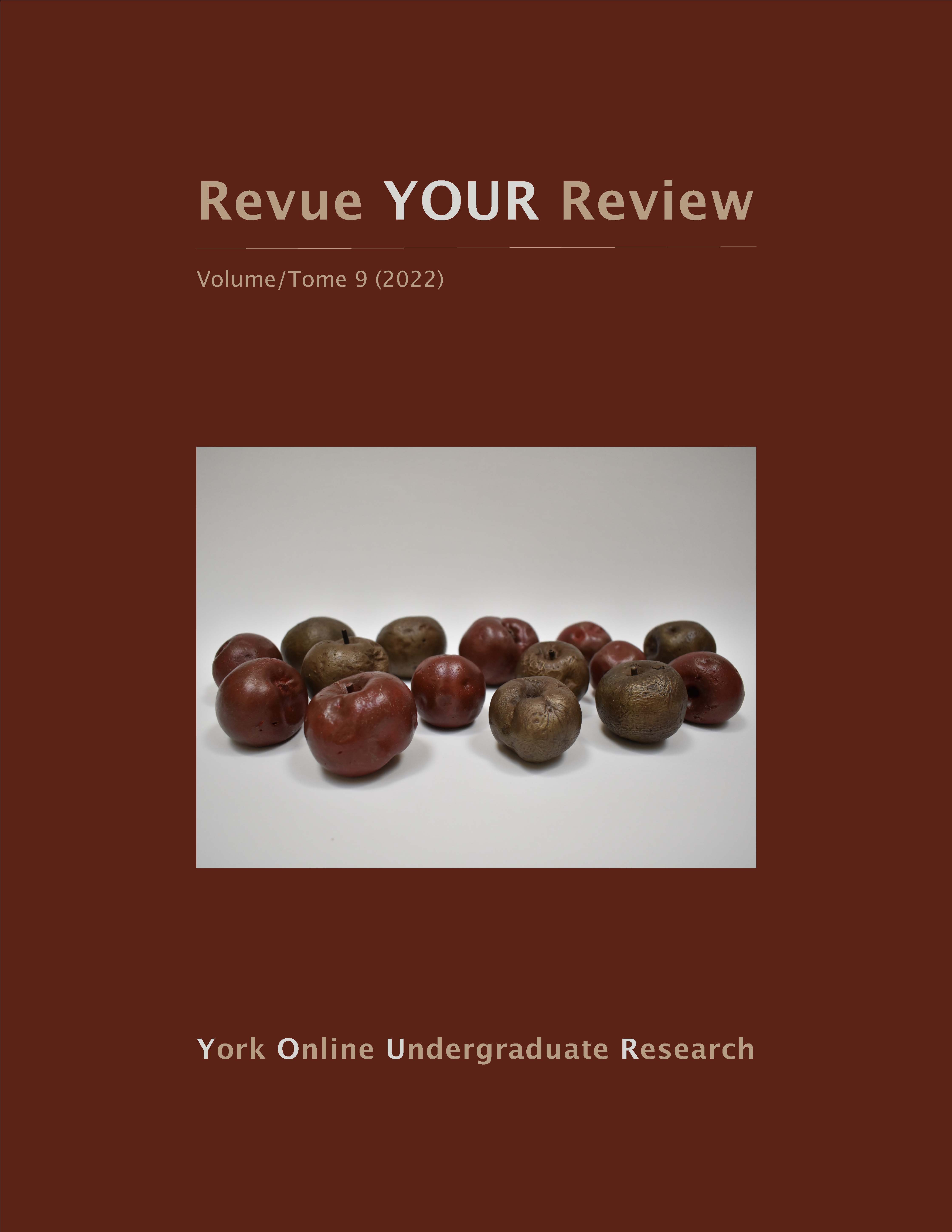Food Deserts in Toronto
Résumé
My article discusses the prevalence of food deserts in Toronto. A food desert can be defined as a geographical area where there is limited access to affordable and healthy food options. These are most common in low-income communities. The purpose of my article is to discuss food deserts in the city of Toronto and why they occur, in relation to the bigger issue of food insecurity. I apply themes of urban environmental justice to explain that there is a link between urban food deserts and low-income people of colour, which puts them at an increased risk for unhealthy diet choices. I used the York University library to access journal articles and other resources that gave me the insight to define food deserts, identify the location of convenience stores in Toronto, and relate this connection to low-income communities. I found that layering disadvantages such as low socioeconomic status, poor access to transportation, and distant proximity to supermarkets contribute to the making of food deserts and cause other complications such as a rise in diet-related diseases. I conclude by suggesting some solutions to food deserts/ food insecurity. These include: the use of community gardens throughout the city which in turn supports the local economy; food trucks that travel to low-income communities to provide healthy foods at a reduced cost; community fridges where residents support each other by putting fresh foods and produce into refrigerators (currently in 5 locations across the city). However, instead of applying “band-aid” solutions to food insecurity, in the larger scheme of things there is a need for fundamental structural changes to food policies in Canada that can change a neighbourhood’s food environment and provide healthy food options.
Téléchargements
Publié-e
Comment citer
Numéro
Rubrique
Licence

Cette œuvre est sous licence Creative Commons Attribution - Pas de Modification 4.0 International.
Les auteurs qui contribuent à la Revue YOUR Review acceptent de publier leurs articles selon une des trois catégories de la licence 4.0 : Creative Commons Attribution 4.0 International; Creative Commons Attribution-Pas d'Utilisation Commerciale 4.0 International; ou Creative Commons Attribution-Pas de Modification 4.0 International. Tout contenu éditorial de ce site ainsi que les affiches et les résumés sont sous la licence Creative Commons Attribution-Pas de Modification 4.0 International. Pour plus d’informations, veuillez voir :
https://creativecommons.org/licenses/
Dans tous les cas, les auteurs conservent leurs droits d’auteurs et concèdent à la Revue YOUR Review le droit de première publication. Les auteurs peuvent, par la suite, conclure d’autres accords de distribution non exclusifs de la version publiée dans ce périodique (par exemple, l’afficher à un dépôt institutionnel ou le publier dans un livre ou dans un autre périodique) à condition que la reconnaissance fasse mention de la publication originale dans la Revue YOUR Review.


